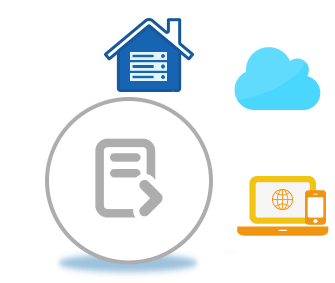Merge Word Documents Online via Merger App or using Java
Develop powerful Java based Word document merging application. Combine multiple Word documents into single one online for free via app. Save Word file as PDF, Images, Word, Excel, PowerPoint & many other formats online.
Merge Word Files Online using App
- Upload Word files to merge them into single one
- Enter the parameters like selection from dropdown
- Save to required format: DOCX, DOC, PDF, XLSX, PPTX, Image, HTML, and others
- Click the “Merge” button to Merge Word into desired format
- Download the merged Word file
- View and get the single merged Word file
Merge Word File via Java
- Add Java library reference into your project
- Load both documents into two separate Document class objects
- Use the appendDocument function to combine the documents
- Call save method and get the merged Word files into one
Java Code to Merge Word Files
Develop Word File Merger using Java
Need to develop Java utility app to easily merge multiple Word files? With
Aspose.Words for Java
child API of
Aspose.Total for Java
, any Java developer can integrate the above API code to program merging app across documents. Powerful Java library for merging documents supports many popular formats including Word format.
Java Merger Library for Word Files
There are alternative options to install “
Aspose.Words for Java
” or “
Aspose.Total for Java
” onto your system. Our Java package is designed to be cross-platform, compatible with JVM implementations on various operating systems such as Microsoft Windows, Linux, macOS, Android, and iOS. Please choose one that resembles your needs and follow the step-by-step instructions:
- Install Aspose.Words for Java
- Or from Maven
- Step by Step Instructions
System Requirements
- Java SE 7 or recent Java versions
- Separate package for Java SE 6 in case you have this outdated JRE.
For JogAmp JOGL, Harfbuzz font engine and Java Advanced Imaging JAI details please refer to [Product Documentation](https://docs.aspose.com/words/java/system-requirements/#optional-dependencies).
Merging Microsoft Word documents using APIs in Java applications improves document workflows across industries. Automated Word merging boosts productivity, maintains branding, and simplifies content management at scale.
Key Use Cases:
- Client Reports: Combine multiple reports into a single, polished Word file.
- Case Files: Merge legal or insurance documents for unified records.
- Branded Content: Automate the creation of business proposals, policies, or contracts with consistent branding.
Automation Scenarios:
- Dynamic Generation: Generate documents dynamically by merging multiple Word files.
- Metadata Cleanup: Remove outdated metadata during the merging process.
- AI Section Restructuring: Use AI to rearrange and format sections for clarity and compliance.
FAQs
- Can I use above Java code in my application?Yes, you are welcome to download this code. One can easily develop a professional solution to combine Word using Java. Use Aspose Word merging API to develop high-level, platform independent software in Java.
- Is this document merging App work only on Windows?You have the flexibility to initiate document merging from any device, irrespective of the operating system it runs on, whether it be Windows, Linux, Mac OS, or Android. All that's required is a contemporary web browser and an active internet connection.
- Is it safe to use the online app to combine multiple Word documents?Of course! The output files generated through our service will be securely and automatically removed from our servers within a 24-hour timeframe. As a result, the download links associated with these files will cease to be functional after this period.
- What browser should to use App?You can use any modern web browser like Google Chrome, Firefox, Opera, or Safari for online Word document merging.
- How can I merge multiple Word files?Start by uploading one or more files you want to merge. You can either drag and drop your Word files or simply click inside the white area. Afterward, click the 'Merge' button, and our merger will quickly process the uploaded files.
- How long does it take to merge the Word files?This merging application operates quickly, It may take a few seconds to upload the files and merge them.
Explore File Merger Options with Java
What is WORD File Format?
Microsoft Word is a widely used word processing software that provides various file formats for saving and sharing documents. Understanding the different file formats in Word is important for compatibility, accessibility, and preserving formatting.
The default file format in Word is DOC (Word Document). DOC files are compatible with older versions of Word but may have limitations in compatibility with other software applications. However, with the introduction of newer versions, the DOCX (Word Open XML Document) format has gained popularity. DOCX offers advantages such as smaller file sizes, improved data recovery, and enhanced compatibility with other programs.
In addition to DOC and DOCX, Word supports other file formats like PDF (Portable Document Format). PDF files are widely used for sharing and publishing documents because they retain the formatting, layout, and fonts of the original document, ensuring consistent viewing across different devices and platforms.
Word also allows saving documents in formats like RTF (Rich Text Format) and TXT (Plain Text). RTF files maintain basic formatting and are compatible with various word processing applications. TXT files store plain text without any formatting and are commonly used for transferring text between different software programs.
For compatibility with open-source software and online platforms, Word supports formats like ODT (OpenDocument Text) and HTML (Hypertext Markup Language). ODT files can be used with software like LibreOffice and Google Docs, while HTML files allow documents to be displayed in web browsers.




